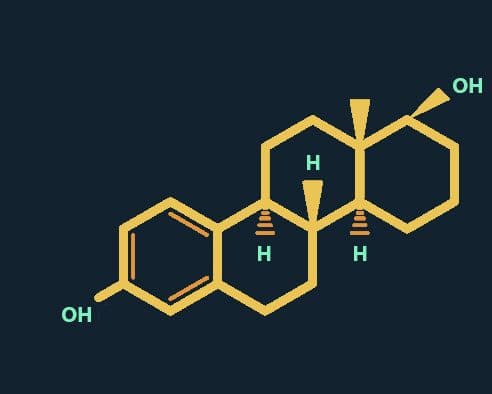Premenopausal women generally have circulating estrogen levels approximately ten times higher than those of men, whereas postmenopausal women have levels that are lower or comparable to those observed in men. This pattern suggests that estrogen may play a protective role before menopause, when estrogen levels are naturally higher. Reduced estrogen levels in women with SSD have been linked to worsening symptoms during hormonally sensitive periods such as menstruation, after childbirth (postpartum), and during menopause. These observations have prompted researchers to explore whether increasing estrogen levels could help stabilize symptoms and improve treatment response. Antipsychotic medication remains the cornerstone of treatment for schizophrenia and related disorders. However, for many people, particularly women after midlife, these medications can become less effective over time. Some studies suggest that declining estrogen levels may reduce the brain’s responsiveness to antipsychotic drugs, underscoring the need for new strategies. That’s where estrogen-based treatments come in. Natural and synthetic estrogens, selective estrogen receptor modulators (SERMs), and even plant-derived compounds called phytoestrogens are being explored as potential adjunctive therapies. Rather than replacing antipsychotics, these treatments could serve as valuable add-ons, enhancing their benefits while targeting brain systems involved in mood and cognition.
“The LSR 9 protocol for Schizophrenic Spectrum Disorder is a welcome initiative from GALENOS which will help practitioners, patients and caregivers better understand the evolving dynamics of schizophrenia and will help in offering better line of treatment and care. It is a well recommended resource in this field." Omoh E – member of the EA bank for GALENOS
Early research in this area shows promise but findings have been mixed. Many studies have small sample sizes or differing designs, making it difficult to draw firm conclusions. Recognizing this gap, the GALENOS lived experience team identified estrogen-based treatments as a priority topic. People with SSD have consistently expressed the need for clearer answers on treatment options that address sex-specific differences in illness progression and response. This living systematic review aims to meet that need. It will evaluate the effects of estrogen-based treatments on symptom severity in adults with SSD, identify the factors that influence treatment outcomes, and assess their safety and tolerability. By synthesizing both human and animal evidence, the review will help uncover how these treatments work and for whom they might be most effective.
“At last; research which isn't afraid to pay due regard to the 'bio in 'biopsychosocial'.” Sarah Markham – member of the EA bank for GALENOS
To keep pace with rapid scientific developments, this review will be updated every six months, incorporating the latest controlled animal studies and human randomized placebo-controlled trials. In doing so, it will provide up-to-date, high-quality evidence to support more informed and personalized care for people living with schizophrenia spectrum disorders.

